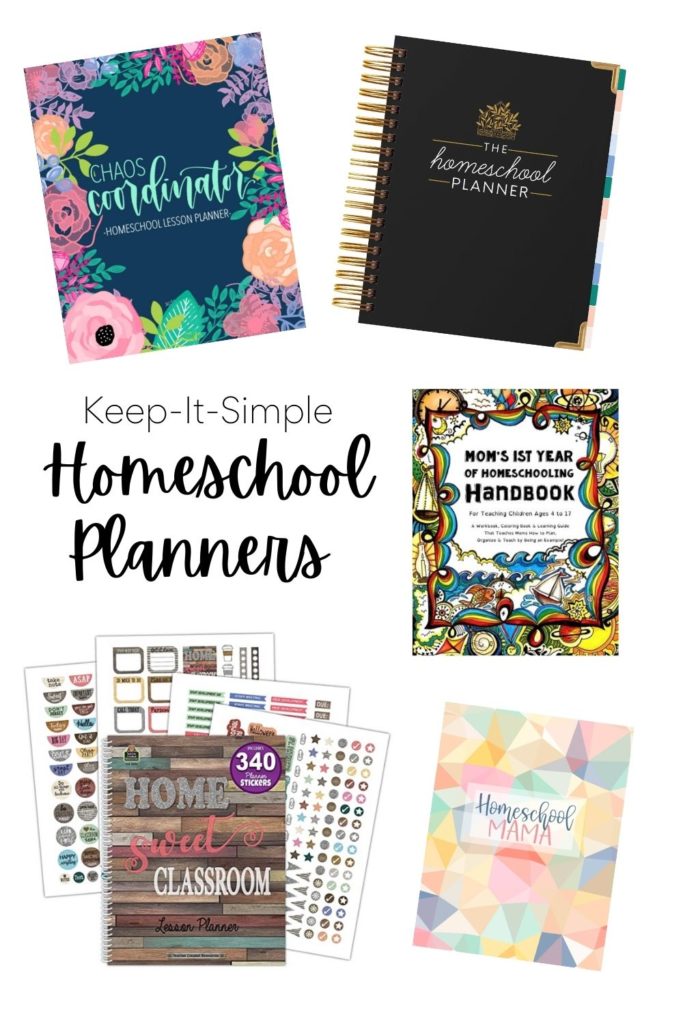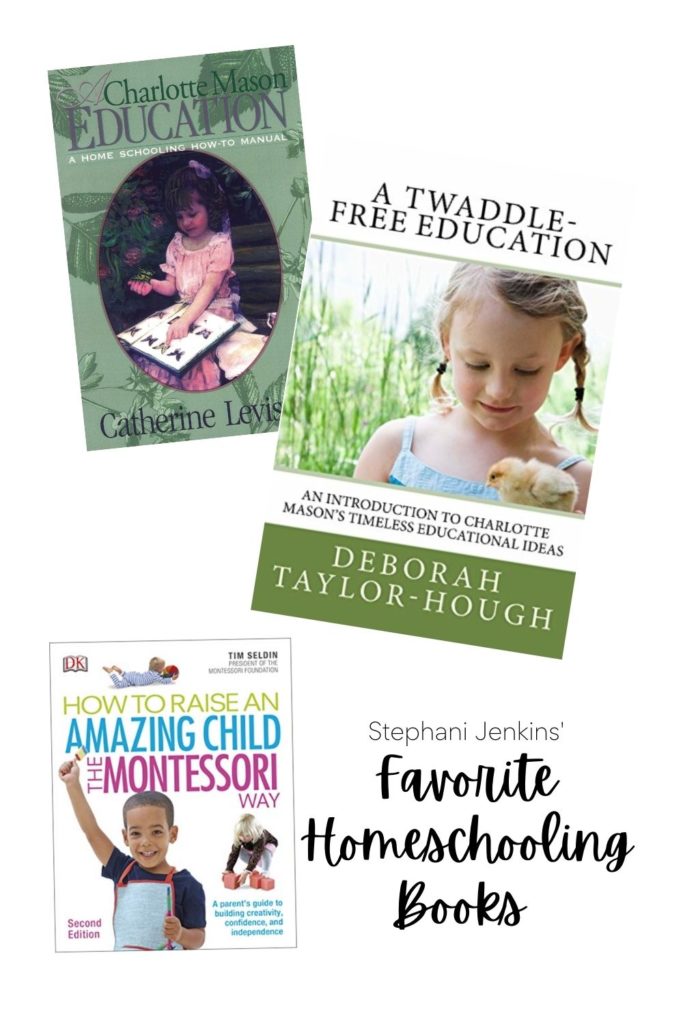Stay organized and keep your homeschool simple! Check out these budget-friendly tools for homeschool parents and students.

This post contains affiliate links. That means if you click on my link and buy something, I will earn a small commission from the advertiser at no additional cost to you. Read my disclosure policy here.
Are you considering homeschooling this year?
Random fact about me: I was the first homeschool graduate in my family, EVER.
Chris, my husband, was also homeschooled for most of his life. Honestly, I don’t know what possessed our parents to make this wild decision back in the ’90’s – after all, no one knew what those unsocialized homeschoolers were going to be like as adults.
But it worked. Chris and I are both hard-working, well-adjusted adults who liked homeschooling so much, we decided to homeschool our own kids.
(More details about our weird homeschool life in Chris’ and my unconventional love story, which was published by Love What Matters, here!)
While we think there are a lot of good reasons to put your kids in school, and every family has to do what works for them, homeschooling was a very natural choice for us. That being said, homeschooling is never the easy decision. Life is a total circus. It’s a hot mess. And sometimes it is precious, like the photos in this post.
If you follow me on Instagram and Facebook Stories, you see more of the hot mess side of things. Usually in the form of videos of loud children and messy kitchens.
Since I can look at homeschooling both from a student’s point of view and from a teacher’s, I’ve had a lot of fun guiding our children’s education over the years.
Naturally, we have made our homeschool education very budget-friendly, and as a working homeschool mom, independent learning is extremely important to me.
A few books made all the difference for me. These books showed me that homeschooling could be fun, simple, and didn’t have to be expensive.
They also helped me figure out what my main goals were as a homeschool parent.
Homeschooling Tools for Teachers
As a working homeschool mom on a budget, my favorite tools center around these things:
- Help me stay organized
- Keep homeschooling simple and budget-friendly
- Inspire my kids to love learning
Tools to Help You Organize Your Homeschool
Everyone is different, but here is how I stay organized:
- List all of our subjects, curriculum used, and grades on my computer. This is required by law where I live, but making this list every semester is really the key to staying organized for me.
- Keep a note (or 2) on my phone about semester goals, ideas, to-dos, and weekly routines. This note is constantly changing, but it’s where I brain dump and keep track of what’s coming.
- Weekly printable Goal Charts! Each student has one, and I do as well. You can find a lot of pretty ones online, but honestly, I just whipped mine up in Google docs, and I change it every semester to suit our needs.

If you’re more of a printed planner person, check out these homeschool planners on Amazon!
- Homeschool Mama: Weekly & Monthly Lesson Planner and Record Book for Teaching Multiple Kids
- Chaos Coordinator: Homeschool Lesson Planner: Undated Organizer for Distance Learning Home School Parents & Tutors
- The Homeschool Planner: Beautiful Undated Homeschool Planner with Monthly Tabs | To Do List, Goals, Meal Planning & Academic Tools
- Home Sweet Classroom Lesson Planner
- Mom’s First Year Of Homeschooling – Handbook: For Teaching Children ages 4 to 17
Tools to Help You Keep Homeschooling Simple
As a homeschool teacher, there are a few things that will help keep your homeschool simple.
- Knowledge about your Country/State/Province’s laws concerning homeschooling
- Community with local homeschoolers
- A simple plan for your homeschool year
Read more about each of these below!
Knowledge about your Country/State/Province’s laws concerning homeschooling
Every country has different laws concerning homeschooling. This sounds intimidating, but it doesn’t have to be. A quick internet search for your State and their homeschool guidelines should get you started.
For our family, we use HSLDA, Homeschool Legal Defense Association. It’s a yearly membership that gives us instant access to accurate information about homeschooling laws and guidelines. They have homeschooling experts and lawyers available anytime to tell you exactly what you need to know or do about any issue related to homeschooling.

Community with Local Homeschoolers
YOU NEED THIS. As a second-generation homeschooler, I’ve seen too many families become isolated in their homeschooling journey. We all homeschool for different reasons, but you need a local community of friends. Homeschool groups provide resources for field trips, extracurriculars, clubs, and life-long friendships.
No group of people is perfect, but they are one of the best parts of homeschooling. I recommend searching for Facebook groups in your town or local area first. You can also search for a local Wild & Free group here! Wild & Free is a fantastic community to plug into, and we’ve loved them.
A Simple Plan for Your Homeschool Year
There are a million different ways to homeschool, and there are enough curriculum options out there that no matter what your personality, you’ll find something that will work for you.
In this section, I just want to encourage you to keep it simple. It’s easy to get excited (yes, you can totally get excited about curriculum and homeschooling plans) and go overboard. It’s easy to cram too much into your schedule.
I recommend you look at your Three R’s first (Reading, Writing, Arithmetic), and then add 1-2 more things on top of that. If you have high schoolers, you need to follow more guidelines. But for younger kids, you can keep it pretty simple.
For our family, we love the Montessori and Charlotte Mason educational methods. I chose these methods for our family for a few reasons:
- They seemed like the most fun for my active, hands-on boys
- You can make them very budget-friendly
- They encourage independent learning

These books are my favorite easy-reads and footnote versions of the Charlotte Mason and Montessori methods.
- A Charlotte Mason Education: A Home Schooling How-To Manual, By Catherine Levison
- A Twaddle-Free Education: An Introduction to Charlotte Mason’s Timeless Educational Ideas, By Deborah Taylor-Hough
- How to Raise an Amazing Child the Montessori Way, By Tim Seldin
These easy reads share a few perspectives that I found helpful when deciding what homeschooling would look like for us. There are a lot of different ways to homeschool. If this doesn’t work for you, try something else! You’re the boss.
Tools to Help You Keep Homeschooling Budget-Friendly
My dad was a teacher, and my mom stayed home and homeschooled us. She always had a side gig to help make money, but for the most part, we were a one (small) income family.
An expensive curriculum was never an option.
Now, I am a homeschool teacher during the Google Age with a fantastic local library.
An expensive curriculum isn’t necessary.
You don’t need an expensive curriculum either.
If you’re just starting out, I know it seems easier to just buy an all-in-one program. And there’s nothing wrong with that. Maybe that’s what works best for you! But maybe not. Even if you’re a veteran teacher, it’s easy to get excited and go overboard at the beginning of the year.
These places are always my first go-to’s for curriculum and school supplies:
– The library
– The library app
– Thrift stores (for games and activities)
– Free educational apps
– Free printables and games online
– Homeschooling friends who are getting rid of curriculum
– The Dollar Store and all the random workbooks and craft supplies you can find there.

3 Free Online Curriculums
Here are some simple, FREE curriculum options.
1. Easy Peasy All-in-One Homeschool
K-12 online curriculum that uses resources and games around the web to create a varied, interactive education. Everything is online, so your child should have access to a computer, decent internet, and be able to follow the links in each lesson (so keep that in mind if you have limits on your web browser).
2. Khan Academy
A free educational resource that includes all the videos and lessons and quizzes on a single site. Complete K-12 curriculum with lots of options for high school courses. The student should have access to a laptop and decent internet.
A free Charlotte Mason K-12 online curriculum. Charlotte Mason focuses on reading lots of books, and Ambleside provides resources to free versions of eBooks, PDFs, and audiobooks so you can keep your Charlotte Mason education as budget-friendly as possible. The teacher needs internet access, and an eReader (Kindle, Nook, tablet, etc.) for the teacher and/or student (depending on the age of your student) would be helpful. Math is not included with Ambleside online, but they have a math curriculum page and you can always use Kahn or Easy Peasy to supplement!
Tools to Inspire Your Kids to Love Learning
Because I work from home as well, I try to encourage as much independent learning as possible. We set up kids with games, I assign reading and other assignments for the week, I read aloud a few mornings a week, and I correct math. If a child is struggling with a concept, I help them with it or we turn to the internet for research.
Books like A Charlotte Mason Education: A Home Schooling How-To Manual, By Catherine Levison, A Twaddle-Free Education, By Deborah Taylor-Hough, and How to Raise an Amazing Child the Montessori Way, By Tim Seldin, helped me set up our schedule and home to inspire a love for learning.
Never underestimate the power of playing outside, educational TV shows, apps, board games, or simply reading good books. Kids learn so much by playing.
Check out more of our Homeschooling resources, as well as a sample of our homeschool day here!






Pingback: Homeschooling For Preschool (Budget-Friendly Ideas) • Stephani Jenkins